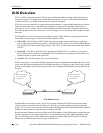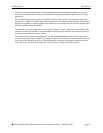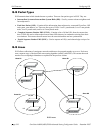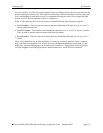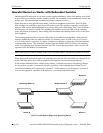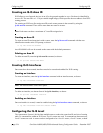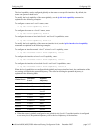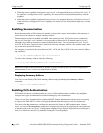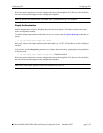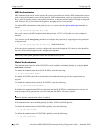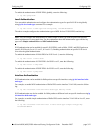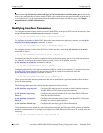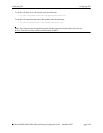
Configuring IS-IS Configuring IS-IS
page 3-16 OmniSwitch 6800/6850/9000 Advanced Routing Configuration Guide December 2007
Creating an IS-IS Area ID
IS-IS allows a set of network devices in an AS to be grouped together in areas. Each area is identified by
an area ID. The area ID is a 1–13 byte variable length integer, which specifies the area address of an IS-IS
routing process.
For creating an IS-IS area first assign area ID to each router present in the network by using the
ip isis area-id command. There can be more than one router in an area.
Note: Each router can have a maximum of 3 area IDs assigned to it.
Creating an Area ID
To create an area ID and associate it with a router, enter the ip isis area-id command with the area
identification number at the CLI prompt, as shown:
-> ip isis area-id 49.0001
Area ID 49.0001 will now be created on the router with the default parameters.
Deleting an Area ID
To delete an area ID, enter the ip isis area-id command, as shown:
-> no ip isis area-id 49.0001
Creating IS-IS Interfaces
Once areas have been created, interfaces need to be created and enabled for IS-IS routing.
Creating an Interface
To create an interface, enter the ip isis interface command with an interface name, as shown:
-> ip isis interface vlan-101
Note. The interface name cannot have spaces.
To delete an interface, use the no form of the ip isis interface, as shown:
-> no ip isis interface vlan-101
Enabling an Interface
Once an interface is created, it must be enabled using the ip isis interface status command, as shown:
-> ip isis interface vlan-101 status enable
Configuring the IS-IS Level
The Autonomous System is divided into multiple areas to reduce the control traffic and size of routing
table. To communicate within an IS-IS area, Level-1 routers are used. To communicate between areas,
Level-2 routers are used. A router can be a configured to be a Level-1 router, a Level-2 router, or both.



